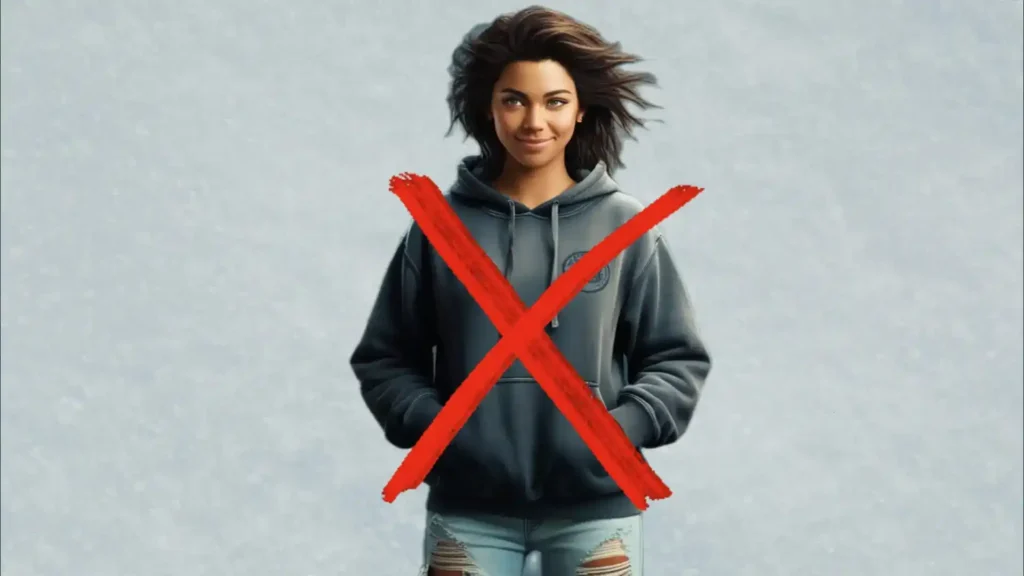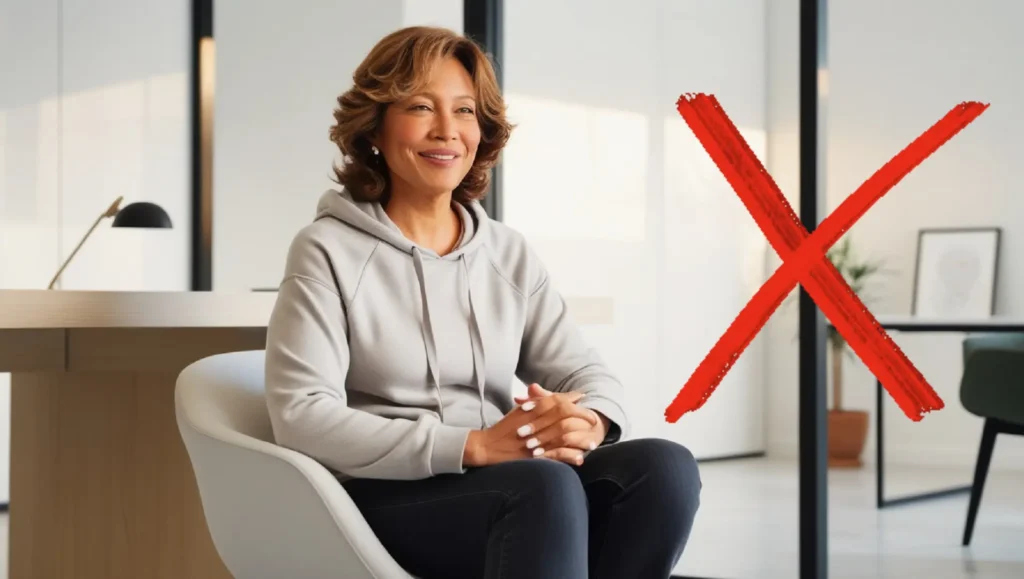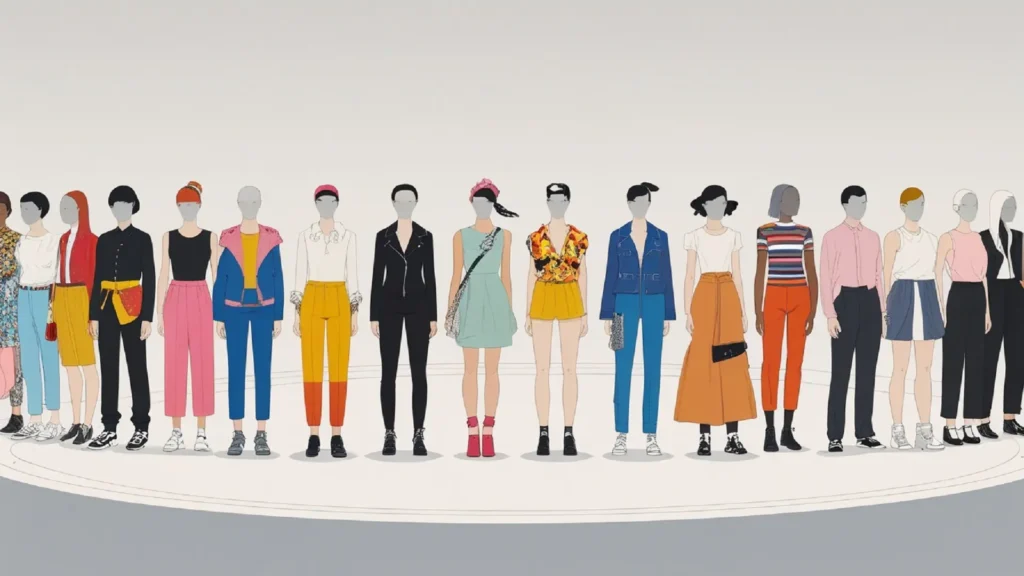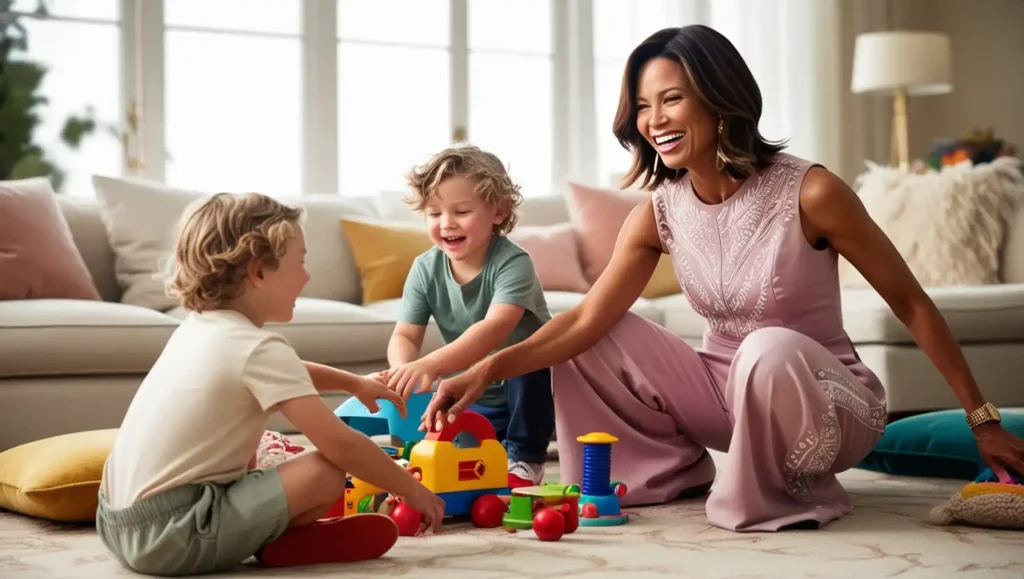Interviews are special event, and you should put effort into you attire. Your clothing plays a critical role in interview to give an overall good impression and prove your skills. Dressing appropriately shows that you are serious about the opportunity and respect the professional environment.
It’s one of your responsibility to dress properly to an interview, and there are certain types of clothing, accessories, and styles that you should avoid. There are some negative impacts on your success for this fashion styles as they may distract the employers from your qualifications or give the wrong impression.
Here’s a list of things you should not wear to a job interview as a woman:
Casual Clothing
Jeans
Jeans are comfortable and versatile in day-to-day life. But they are too casual for a job interview. Most professional settings require a polished appearance. Even if the company has a business casual dress code, jeans might still come across as too laid-back and not serious enough for an interview.
Jeans tend to be associated with leisure or weekends, and for non-formal daily work-activities. Wearing jeans sent a message to the prospective employer that you aren’t serious about the job you have applied.
Instead of jeans, opt for tailored trousers, a pencil skirt, or a business suit to ensure you project the professionalism needed to make a strong impression.
Sweatpants or Leggings
Sweatpants and leggings are comfortable. They are inappropriate for an interview. They lack structure and convey a message of relaxation, not ambition or professionalism. Even in a creative or casual work environment, it’s essential to show you can present yourself in a more polished way.
Leggings come across as unprofessional unless paired with a tunic-style top or a structured jacket. However, this combination is often considered too casual for most job interviews. So, stick with more traditional business wear such as tailored trousers or a skirt.
T-shirts
T-shirts, designed with graphics, slogans, or logos, aren’t suitable for an interview. They don’t match even in relaxed dress-code industry.
Instead of T-shirts, choose a button-down blouse or a well-tailored shirt. The key is to maintain a balance between comfort and professionalism. A crisp shirt made from quality fabric (cotton or silk) will present a much more polished image than a designer T-shirt.
Overly Revealing or Inappropriate Attire
Low-cut Tops
Tops with a plunging neckline or overly revealing cuts are best avoided for interviews. They can create unnecessary distractions and shift the focus away from your qualifications.
A professional image in the workplace is built on credibility and expertise, not on how much skin you show. When you wear clothing that exposes too much cleavage, you risk coming across as unprofessional or not taking the interview seriously.
A modest neckline, though it doesn’t guaranty job interview success, ensures that the focus is on your skills and experience, rather than your appearance.
Short Skirts
While skirts can be a great choice for an interview, they should be knee-length or just slightly above the knee. Skirts that are too short (especially those that end several inches above the knee) aren’t appropriate to a job interview.
Opt for a pencil skirt or a straight-cut skirt that falls comfortably at or just above the knee. This length ensures that you remain professional and modest while still showing some personal style.
Excessive Body-Conscious Clothing
Bodycon dresses and skirts look flattering for evening wear, but they are too tight or revealing for a job interview. Clothing that hugs your figure too closely is unprofessional in many industries.
The goal in an interview is to look professional, not overly concerned with how your body is presented. Instead, look for tailored or slightly looser clothing that allows you to move comfortably while maintaining a professional appearance. Choose well-fitted pieces that highlight your shape without being too revealing.
Overly Casual Footwear
Flip-flops or Sandals
Flip-flops and sandals are perfect for casual outings, but not for a job interview. They look laid-back and unpolished, signaling a lack of effort in your appearance. In casual or creative environments, closed-toe shoes such as flats or low heels are a better choice.
Sandals with straps still come off as too relaxed. For interviews, opt for a closed-toe pump, a sleek flat, or a low heel to ensure that your footwear complements your attire. You shouldn’t wear them to a interview.
Sneakers
Wear sneakers if you apply an athletic or fitness-related job. Otherwise avoid them. They convey a relaxed and informal attitude, which may not align with the professional image.
Go for classic options like pumps, loafers, or boots. Properly polished shoes will elevate your appearance and help you stand out as someone who understands the importance of presentation in the workplace.
Overly High Heels
Heels are commonly worn in many professional settings. It is expected in an interview to put on a moderate heel (1 – 3 inches). Overly high or stiletto heels are problematic for interviews. Heels above 4 inches are difficult to walk in and cause discomfort during the interview, making it harder to focus on your responses.
Excessive Accessories
Loud, Statement Jewelry
Bold, flashy jewelry take the focus away from your qualifications during an interview. Avoid large, chunky necklaces, oversized earrings, and statement rings in a professional setting. Instead, go for minimal and subtle pieces.
A simple pair of stud earrings, a delicate bracelet, or a classic watch add sophistication to your look, which gives confidence for your job interview.
Over-the-Top Scarves or Hats
Colorful scarves and hats are stylish, but dramatic for an interview setting. If you do wear a scarf, keep it simple and neutral in tone, such as a soft beige, navy, or black. Avoid scarves with bold patterns or fringe unless you’re in a very creative environment that encourages such expression.
Similarly, hats should be left off for interviews unless you are applying for a position in a fashion-forward or creative industry that embrace them as part of the culture. Stick to simple, polished accessories that complement your overall outfit.
Excessive Perfume
Wearing perfume during an interview is fine as long as it’s subtle. Strong fragrances, however, can be overwhelming.
Choose a light, fresh scent, or avoid fragrance altogether to prevent any potential negative reactions. A gentle, clean smell can subtly enhance your overall presentation, but it should never overpower the environment.
Clothing with Logos or Graphics
Clothing with Brand Logos
Clothes with visible logos or brand names make your outfit appear casual. Sometimes it represents that you’re endorsing a brand rather than focusing on your professional appearance. This is especially true in job interviews, where you want the focus to be on your qualifications and how you fit the role, not on the clothes you’re wearing.
Even if you’re wearing designer items, a large logo can take away from your polished look. Opt for pieces that are free from visible logos. Neutral, solid colors or subtle patterns are ideal.
Graphic T-shirts or Sweatshirts
Graphic t-shirts or sweatshirts, especially those with images, words, or logos, aren’t suitable for an interview. They suggest a relaxed and unprofessional attitude.
For a professional appearance, choose simple, solid-color tops or classic blouses that communicate respect for the company and the position. Avoid items that feature graphics of any kind unless they are directly related to your career.
Overly Trendy or Flashy Clothing
Trendy Fashion Pieces
While it’s important to look fashionable, overly trendy clothing can sometimes be distracting and not align with the professional tone of a job interview. In an interview, you want to look timeless and confident, so stick with classic styles that emphasize professionalism.
A well-tailored blazer, a simple pencil skirt, or a sheath dress will never go out of style and can help ensure that your outfit remains appropriate for a wide range of industries.
Bright or Neon Colors
Neon or overly bright colors, while eye-catching, can be distracting in an interview setting. Colors like fluorescent pink, lime green, or electric blue can overwhelm the interviewer and pull attention away from your qualifications.
Opt for muted, professional colors like navy, black, gray, and white. If you do want to add a splash of color, keep it subtle. Think a pastel blouse under a neutral-colored blazer, or a soft accent like a burgundy handbag or a pale blue scarf.
Too Much Flash or Sparkle
Avoid sequins, glitter, and other shiny details for an interview. In a professional setting, you want your qualifications to be the focal point, not the sparkle of your clothing.
Choose fabrics that are matte or subtle, such as wool, cotton, or silk. Save the sequins and sparkles for holiday parties or nights out and aim for a more.
Wrinkled or Unkempt Clothing
Wrinkled Clothes
You shouldn’t wear wrinkled clothes to a job interview. Wrinkled clothes signal a lack of preparation for the interview. Wrinkles give an impression that you are untidy and unprofessional. So, make sure that your clothes are freshly pressed and look neat. Iron or steam your outfit the night before the interview to ensure that it’s crisp and professional.
Moreover, wrinkled clothes make your confidence fragile. Taking time to ensure your clothes are in excellent condition shows that you care about the opportunity and are serious about making a positive impression for the organization if employed.
Dirty or Worn Shoes
Shoes that are scuffed, dirty, or have worn-out soles are a major red flag in a professional interview. They can make even a well-put-together outfit look sloppy.
Make sure your shoes are polished, clean, and in good condition before the interview. Replace any scuffed or damaged shoes. The same goes for handbags and accessories. By taking care of every detail, you demonstrate a commitment to professionalism.
Informal Outerwear

Hoodies
Avoid hoodies completely to an interview. They come across as sloppy or unprofessional, when paired with formal interview attire like blazers or dress pants. They aren’t even appropriate in laid-back industries or startups.
Instead of a hoodie, opt for a structured blazer or a lightweight jacket to add warmth and sophistication to your outfit. A classic trench coat, tailored wool coat, or smart blazer not only keep you warm in winter months but also elevate your outfit, making you look well-prepared and polished.
Puffy Coats
You shouldn’t wear puffy coats, fleece jackets, or other bulky, casual outerwear for a job interview. These types of jackets are typically worn for outdoor activities or casual settings.
Instead, choose a coat that is sleek, well-fitted, and made from more professional fabrics. A tailored wool coat, a chic trench coat, or a structured blazer will give your outfit a refined touch. These coats not only protect against the cold but also add an element of sophistication to your overall look.
By avoiding bulky outerwear, you demonstrate that you understand the importance of creating a clean, polished, and professional appearance from head to toe.
Casual Jackets and Windbreakers
Windbreakers, denim jackets, or other casual outerwear options also fall into the category of items to avoid for a job interview. Avoid these items for a professional setting.
Always choose a jacket or coat that is clean, tailored, and fits well, ensuring that it doesn’t detract from the main elements of your interview attire.
In a job interview, what you wear can significantly influence the interviewer’s first impression of you. It’s crucial to dress in a way that reflects your professionalism, your respect for the company, and your understanding of the job’s expectations. Avoid clothing that is too casual, revealing, trendy, or distracting. Instead, opt for polished, well-fitting, and conservative pieces.




